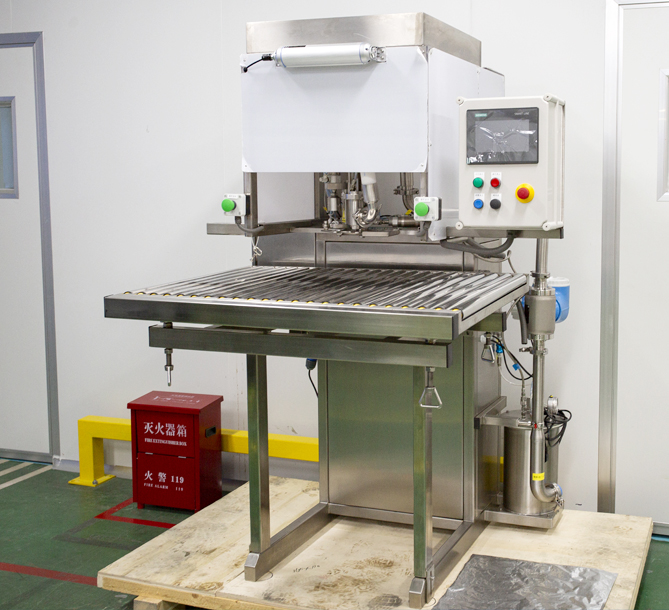Bag-in-Box (BIB) packaging has revolutionized the way liquids are stored and distributed, offering superior efficiency, product protection, and sustainability. At the heart of this innovative packaging solution lies the sophisticated Bag-In-Box packaging filling equipment. This technology is critical for businesses aiming to scale their production while maintaining the highest quality standards. This guide delves deep into the world of BIB filling machinery, exploring its types, benefits, and key considerations for selection, ensuring you make an informed investment for your operational needs.
Bag-In-Box packaging filling equipment refers to the automated or semi-automated machinery systems designed to form, fill, and seal bag-in-box containers. These systems handle the precise dispensing of liquid products—such as wine, syrup, dairy, chemicals, and liquid foods—into a pre-made or form-fill-seal plastic bag, which is then housed within a protective cardboard box. The process is intricate, requiring accuracy to prevent oxidation, ensure shelf life, and maintain product integrity. The core functions of this equipment typically include bag opening, gas flushing (for oxygen-sensitive products), precise volumetric or gravimetric filling, sealing, and box closing or erecting.

Investing in automated automated bag-in-box filling systems transforms production lines by significantly enhancing efficiency, consistency, and scalability. Automation minimizes human error, reduces labor costs, and maximizes throughput, allowing businesses to meet growing market demands. These systems are engineered to handle high-volume production with remarkable precision, ensuring each package is filled to exact specifications, which is crucial for cost control and regulatory compliance. Furthermore, automated systems often incorporate advanced data tracking and reporting features, providing valuable insights into production metrics for continuous improvement.
Selecting the ideal BIB filling machine selection guide is a strategic decision that hinges on a thorough analysis of your specific production requirements. A one-size-fits-all approach does not apply, as the best machine for a small winery will differ vastly from that needed for a large-scale chemical manufacturer. The key is to evaluate factors such as production volume, product characteristics, available factory space, and budget. Understanding the nuances of different machine capabilities will ensure you invest in equipment that not only meets your current needs but also offers flexibility for future growth.
The market offers various types of filling equipment, each suited to different operational scales and product types. The following table outlines the primary differences to aid in your decision-making process.
| Machine Type | Ideal For | Approx. Speed (bags/hour) | Key Advantage |
| Semi-Automatic | Low-volume producers, startups, R&D | 100 - 500 | Low initial investment, operational simplicity |
| Automatic Linear | Medium to high-volume production | 600 - 1,200 | Good balance of speed, cost, and flexibility |
| Automatic Rotary | Very high-volume, large-scale production | 1,500 - 3,000+ | Maximum throughput and efficiency |
Proper maintenance for liquid filling equipment is non-negotiable for ensuring longevity, consistent performance, and product safety. A well-maintained machine minimizes unplanned downtime, prevents costly repairs, and guarantees the hygienic standards required for food and beverage production. Maintenance is a combination of daily cleaning routines, regular inspection of critical components, and adherence to the manufacturer's scheduled service recommendations. Creating a standardized maintenance protocol is an investment in your operation's reliability and efficiency.
Understanding the cost of bag-in-box machine investment involves looking beyond the initial purchase price. A comprehensive cost analysis considers the total cost of ownership (TCO), which includes acquisition, installation, operation, maintenance, and potential downtime costs. While semi-automatic machines have a lower entry point, their higher labor costs and slower speeds may make them less economical for larger operations. Conversely, a high-speed automated system requires a significant capital investment but offers a lower cost-per-unit in high-volume scenarios, leading to greater long-term savings and profitability.
Bag-In-Box filling equipment is incredibly versatile and can handle a wide array of free-flowing liquid products. Common applications include wine, juices and concentrates, liquid eggs, dairy products like milk and yogurt drinks, syrups for coffee and soda dispensers, edible oils, water, and even industrial liquids such as lubricants, chemicals, and adhesives. The key is to match the product's properties (e.g., viscosity, acidity, particulates) with the appropriate pump and material of construction for the fluid path to ensure compatibility and hygiene.
Gas flushing, also known as inert gas flushing or sparging, is a critical feature in automated bag-in-box filling systems for oxygen-sensitive products. Before sealing the bag, the machine injects an inert gas—typically nitrogen or a nitrogen-carbon dioxide mix—into the headspace of the bag. This process displaces the oxygen that was present. Since oxygen is the primary catalyst for oxidation and microbial growth, its removal significantly slows down spoilage and degradation. For products like wine or certain dairy items, this can extend shelf life from weeks to several months, even after opening, as the bag collapses during dispensing, preventing air from re-entering.
Output speeds vary significantly based on the level of automation and the specific model. Semi-automatic machines, which require an operator to manually place the bag and sometimes initiate the cycle, typically have outputs ranging from 100 to 500 bags per hour. In contrast, fully automatic linear systems, where bags are automatically fed, filled, and sealed on an in-line conveyor, can achieve speeds of 600 to 1,200 bags per hour. For the highest volume needs, rotary automatic machines, with multiple filling heads operating simultaneously, can reach outputs exceeding 2,000 to 3,000 bags per hour.
Most modern Bag-In-Box packaging filling equipment is designed with flexibility in mind and can be configured to handle a range of bag sizes. This is typically achieved through changeparts and programmable logic controller (PLC) settings. Operators can change the filling nozzle, adjusting the sealer jaws, and reprogram the fill volume and gas flush parameters for the new bag size. The ease and speed of this changeover process depend on the machine's design. High-end models often feature quick-change tooling and recipe storage, allowing for size changes in minutes, thereby minimizing downtime during production runs for different SKUs.